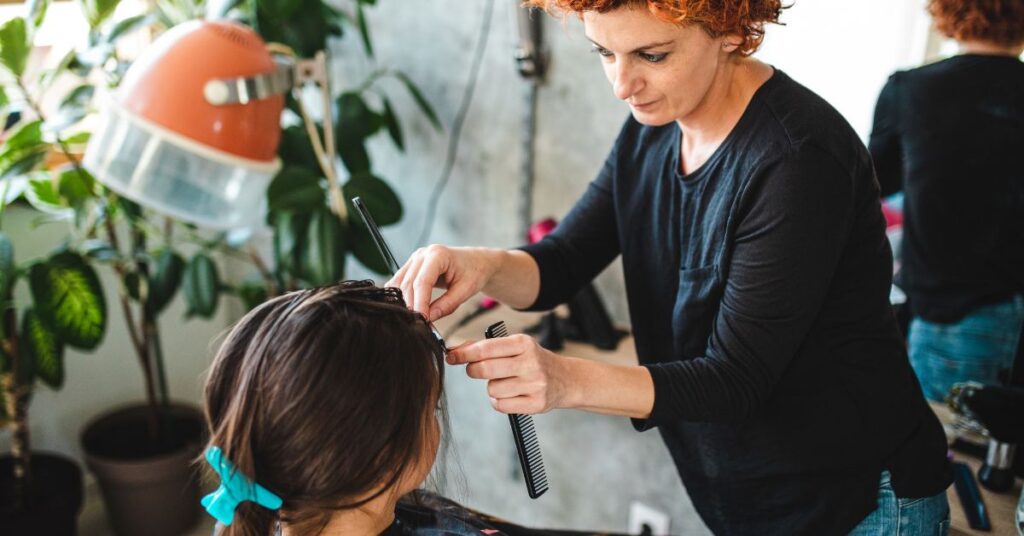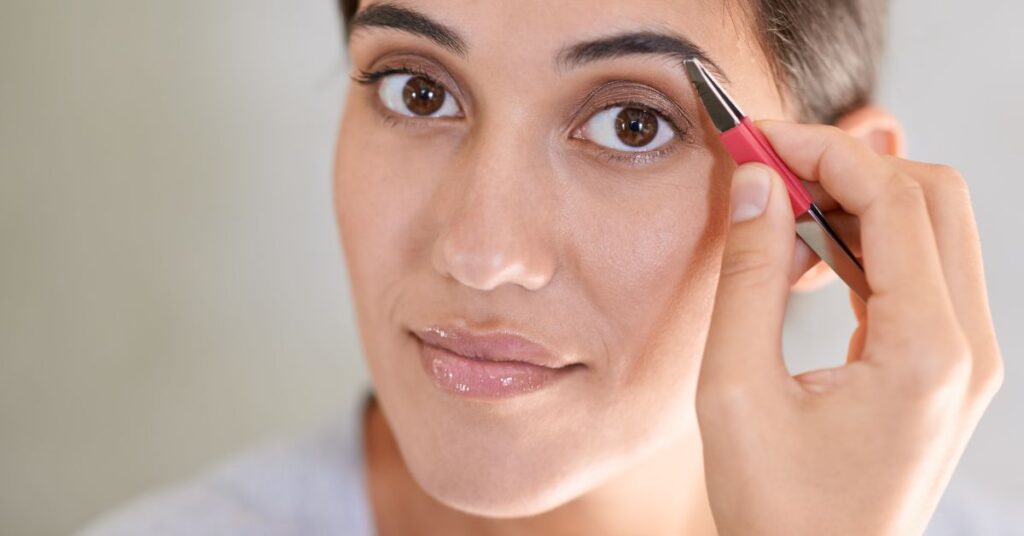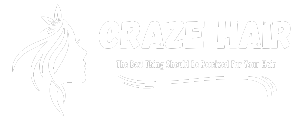
Introduce
As the winter chill sets in, so do the challenges for maintaining healthy, hydrated locks. From battling dryness to combating frizz and static, winter can wreak havoc on your hair. But fear not! In this ultimate guide, we’ll provide you with practical tips and expert advice to conquer your winter hair woes. Whether you’re struggling with moisture loss, scalp issues, or styling dilemmas, we’ve got you covered. Say goodbye to winter hair blues and hello to luscious, hydrated locks all season long.
Understanding Winter Hair Woes
Winter brings with it a host of challenges for our hair, primarily due to the cold, dry air and changes in environmental conditions. Understanding these challenges is the first step towards effectively addressing them.
Overview of Common Issues:
During winter, the air tends to be drier both indoors and outdoors. This lack of moisture can lead to several common hair issues, including:
- Dryness: The cold air outside and the dry heat indoors can strip moisture from your hair, leaving it parched and prone to breakage.
- Frizz and Static: Static electricity is more prevalent in winter due to the lack of humidity in the air, leading to frizz and flyaways.
- Scalp Irritation: Cold, dry air can also cause scalp irritation, leading to dandruff, itchiness, and flakiness.
- Brittleness: Exposure to harsh winter elements can make hair more brittle and prone to damage.
Impact of Cold, Dry Air on Hair Health:
The cold winter air lacks moisture, which can directly affect the health of your hair in multiple ways:
- Moisture Loss: Hair strands lose moisture more rapidly in dry conditions, leading to dryness, dullness, and increased susceptibility to damage.
- Cuticle Damage: Dry air can cause the hair cuticle to lift, making the hair more porous and prone to breakage.
- Scalp Dehydration: Just like the skin, the scalp can become dry and dehydrated in winter, leading to discomfort and potential scalp issues.
Essential Winter Hair Care Routine
Maintaining a consistent and effective hair care routine is crucial for combating winter hair woes. In this section, we’ll delve into the essential steps you need to include in your winter hair care routine to keep your locks healthy and hydrated.
Cleansing Without Stripping Moisture:
- Use Moisturizing Shampoos: Opt for sulfate-free shampoos that are specifically formulated to hydrate and nourish the hair while cleansing. Look for ingredients like glycerin, coconut oil, and shea butter.
- Limit Washing Frequency: Washing your hair too frequently can strip away natural oils, leading to dryness. Aim to wash your hair no more than 2-3 times a week, or as needed based on your hair type and activity level.
- Rinse with Lukewarm Water: Hot water can further dry out your hair and scalp. Rinse your hair with lukewarm water to avoid stripping away moisture.
Conditioning for Hydration and Protection:
- Deep Conditioning Treatments: Incorporate deep conditioning treatments into your routine at least once a week to replenish moisture and nourish the hair. Look for masks and treatments enriched with ingredients like argan oil, avocado oil, and keratin.
- Leave-In Conditioners: Apply a leave-in conditioner or detangling spray after washing your hair to provide ongoing hydration and protection throughout the day.
- Focus on the Ends: Concentrate conditioning products on the mid-lengths and ends of your hair, where moisture tends to be most needed.
Tips for Maximum Hydration:
- Seal in Moisture: After showering, gently squeeze excess water from your hair and immediately apply a hydrating oil or serum to seal in moisture.
- Avoid Overly Hot Styling Tools: Excessive heat can contribute to dryness and damage. Use heat styling tools on the lowest heat setting possible, and always apply a heat protectant spray beforehand.
- Protective Hairstyles: Experiment with protective hairstyles like braids, buns, and twists to minimize exposure to harsh winter elements and reduce moisture loss.
Nourishing Your Scalp
While much emphasis is often placed on caring for the lengths of our hair, maintaining a healthy scalp is equally important, especially during the winter months. In this section, we’ll explore why scalp health matters in winter and provide tips for nourishing your scalp.
Importance of Scalp Health in Winter:
- Foundation for Healthy Hair: A healthy scalp provides the ideal environment for hair growth and strength. Neglecting scalp health can lead to issues such as dandruff, itchiness, and even hair loss.
- Affected by Environmental Changes: The scalp is directly exposed to the elements, making it susceptible to the drying effects of cold, dry air and indoor heating during winter.
- Balance of Oil Production: Maintaining the balance of oil production on the scalp is essential for preventing dryness or excess oiliness, both of which can contribute to scalp issues.
Tips for Maintaining a Healthy Scalp:
- Gentle Cleansing: Use a mild, sulfate-free shampoo to cleanse your scalp without stripping away its natural oils. Massage the shampoo into your scalp using gentle circular motions to promote circulation and remove buildup.
- Exfoliation: Regularly exfoliate your scalp to remove dead skin cells and product buildup, which can clog pores and inhibit healthy hair growth. You can use a scalp scrub or a soft-bristled brush to gently exfoliate the scalp.
- Scalp Massage: Treat yourself to a scalp massage regularly to stimulate blood flow to the scalp and promote the distribution of natural oils. This can help nourish the hair follicles and improve overall scalp health.
- Moisturizing Treatments: Apply moisturizing treatments specifically designed for the scalp to hydrate and soothe dry, irritated skin. Look for products containing ingredients like aloe vera, tea tree oil, or jojoba oil.
- Protective Styling: Avoid tight hairstyles that pull on the scalp, as this can cause tension and potentially damage the hair follicles. Opt for looser styles or protective hairstyles that minimize stress on the scalp.

Hydrating Treatments and Masks
In the battle against winter hair woes, hydrating treatments and masks are powerful allies. These treatments provide an intense dose of moisture to parched locks, helping to restore vitality and shine. In this section, we’ll explore the benefits of hydrating treatments and masks and provide tips for incorporating them into your winter hair care routine.
Benefits of Hydrating Treatments and Masks:
- Deep Moisture Infusion: Hydrating treatments and masks penetrate deeply into the hair shaft, delivering moisture where it’s needed most.
- Repair and Nourishment: These treatments not only hydrate the hair but also provide essential nutrients and vitamins to repair damage and promote healthy growth.
- Enhanced Manageability: Hydrated hair is more manageable, reducing tangles, frizz, and breakage.
- Revitalized Appearance: Regular use of hydrating treatments and masks can leave hair looking and feeling soft, smooth, and radiant.
DIY and Commercial Options:
- DIY Treatments: Many hydrating treatments can be made at home using natural ingredients such as avocado, honey, yogurt, and coconut oil. These DIY options are cost-effective and allow you to customize the treatment to suit your hair’s specific needs.
- Commercial Masks: There is a wide range of commercial hydrating masks available on the market, catering to different hair types and concerns. Look for masks enriched with ingredients like hyaluronic acid, argan oil, shea butter, and keratin for maximum hydration and nourishment.
Tips for Hydrating Treatments and Masks:
- Frequency: Incorporate a hydrating treatment or mask into your hair care routine once or twice a week, depending on your hair’s needs and condition.
- Application: Apply the treatment or mask generously to clean, damp hair, focusing on the mid-lengths and ends. Use a wide-tooth comb to evenly distribute the product and ensure thorough coverage.
- Processing Time: Follow the instructions provided with the treatment or mask regarding the recommended processing time. For deeper hydration, consider wrapping your hair in a warm towel or using a shower cap to trap heat and enhance penetration.
- Rinse Thoroughly: After the allotted processing time, rinse the treatment or mask thoroughly with lukewarm water to remove any residue. Avoid using hot water, as this can strip away moisture from the hair.
Protective Styling Techniques
Protective styling is a key strategy for safeguarding your hair against the harsh winter elements. By minimizing exposure to cold air, wind, and moisture-robbing fabrics like wool, protective styles help maintain moisture levels and reduce the risk of damage. In this section, we’ll explore various protective styling techniques and how to incorporate them into your winter hair care routine.
Minimizing Exposure to Harsh Elements:
- Covering the Hair: Wear hats, scarves, or headwraps made from soft, smooth fabrics like silk or satin to protect your hair from cold air and wind. Avoid hats with rough textures or tight-fitting styles that can cause friction and breakage.
- Protective Hairstyles: Opt for hairstyles that keep the ends of your hair tucked away and minimize exposure to the elements. Braids, twists, buns, and updos are all excellent options for protective styling during winter.
Styles That Preserve Moisture and Minimize Damage:
- Braids and Twists: Braided hairstyles not only look stylish but also help protect the hair from breakage by minimizing manipulation and friction. Opt for loose or medium-sized braids to avoid tension on the scalp.
- Buns and Updos: Tucking your hair into a bun or updo not only keeps it out of the way but also helps prevent moisture loss by reducing exposure to the environment. Experiment with different bun styles, such as low buns, high buns, or twisted updos, to find a look that suits you.
- Protective Hair Accessories: Incorporate hair accessories like hairpins, clips, and scrunchies into your protective styles to secure your hair without causing damage or breakage.
Maintaining Protective Styles:
- Nighttime Care: Protect your hair while sleeping by wrapping it in a silk or satin scarf or using a silk or satin pillowcase to minimize friction and prevent frizz.
- Moisturizing Maintenance: Even with protective styles, it’s essential to moisturize your hair regularly to prevent dryness and breakage. Use a lightweight leave-in conditioner or moisturizing spray to hydrate your hair and scalp as needed.
- Avoiding Over-Styling: While protective styles can help preserve the health of your hair, be mindful not to over-style or manipulate your hair too frequently, as this can cause tension and damage over time.

Conclusion
In conclusion, conquering winter hair woes is achievable with a proactive and tailored approach to hair care. By understanding the unique challenges that winter presents to our hair and implementing a comprehensive routine that includes hydration, scalp care, and protective styling, you can keep your locks healthy, hydrated, and beautiful throughout the season. Whether it’s incorporating hydrating treatments and masks, nourishing your scalp, or embracing protective styling techniques, there are plenty of strategies to help you combat dryness, frizz, and damage. With the tips and techniques outlined in this ultimate guide, you can confidently navigate the winter months with radiant, resilient hair that defies the elements. Say goodbye to winter hair blues and hello to healthy, hydrated locks that shine all season long.read more
Frequently Asked Questions (FAQs) About Winter Hair Care:
1. Why is winter hair care important?
- Winter weather, characterized by cold temperatures and low humidity, can strip moisture from your hair, leading to dryness, frizz, and breakage. Implementing a winter hair care routine helps maintain hydration, protect against damage, and keep your locks healthy and vibrant.
2. How often should I wash my hair in winter?
- Aim to wash your hair no more than 2-3 times a week during winter to prevent stripping away natural oils and exacerbating dryness. Adjust frequency based on your hair type and activity level.
3. What ingredients should I look for in hydrating treatments and masks?
- Look for hydrating treatments and masks enriched with ingredients like hyaluronic acid, argan oil, shea butter, and keratin. These ingredients provide deep hydration, repair damage, and promote healthy hair growth.
4. Can I make hydrating treatments and masks at home?
- Yes! Many hydrating treatments can be made at home using natural ingredients like avocado, honey, yogurt, and coconut oil. DIY treatments are cost-effective and allow you to customize formulations to suit your hair’s specific needs.
5. How do I protect my hair from winter elements?
- Wear hats, scarves, or headwraps made from soft, smooth fabrics like silk or satin to protect your hair from cold air and wind. Opt for protective hairstyles like braids, twists, and buns to minimize exposure and reduce moisture loss.
6. How can I maintain a healthy scalp in winter?
- Practice gentle cleansing with a mild, sulfate-free shampoo, exfoliate regularly to remove buildup, and moisturize with scalp-specific products containing ingredients like aloe vera, tea tree oil, or jojoba oil.
7. Should I adjust my styling routine for winter?
- Yes, it’s essential to adjust your styling routine for winter by minimizing heat styling, using lower heat settings, and applying heat protectant sprays. Embrace protective styling techniques to shield your hair from harsh elements and reduce damage.
8. What should I do if I experience scalp irritation or dandruff in winter?
- If you experience scalp irritation or dandruff in winter, consider using medicated shampoos or scalp treatments containing ingredients like salicylic acid, coal tar, or ketoconazole. Consult a dermatologist if symptoms persist or worsen.
9. Can I prevent static and frizz in winter?
- Yes! To prevent static and frizz, avoid over-drying your hair, use a humidifier indoors to add moisture to the air, and apply anti-static and anti-frizz products like serums or oils to tame flyaways.
10. How do I ensure my hair stays hydrated throughout the winter season?
- Maintain hydration by incorporating hydrating treatments and masks into your routine, sealing in moisture with oils or serums, and adjusting your hair care regimen to protect against moisture loss and damage. Consistency is key to ensuring your hair stays hydrated and healthy all winter long.

